Artificial Intelligence, or AI, is changing how software works. It helps companies make better tools and services. One of the most interesting uses of AI is voice cloning.
Voice cloning helps computers talk like people. The sound feels real and friendly. It helps users connect with a product easily. For SaaS (Software as a Service) companies, this is a big advantage. They can use voices to explain, teach, guide, and sell.
In this blog, we will see what voice cloning is, how it works, and how SaaS companies use it in daily business.
What Is Voice Cloning?
Voice cloning is a way for computers to copy a person’s voice. AI listens to voice recordings and learns how a person speaks. It studies tone, speed, and pronunciation. Then, it can make the same sound again and speak in that person’s voice.
Old text-to-speech tools sounded robotic. They had no emotion or natural flow. But today, professional voice cloning has changed that completely. It uses advanced AI models and neural networks to understand human speech patterns. These systems can now copy the tone, accent, and emotion of a real human voice.
The result sounds almost human soft, natural, and expressive. The voice can show emotion, pause naturally, and adjust tone depending on the message. For example, it can sound calm during tutorials or energetic during ads.
This technology is now used by SaaS companies to make software sound more human. With voice cloning, software can explain things clearly, like a real person would. It helps make communication simple, warm, and personal for users.
How AI Voice Technology Has Grown
AI voice technology has grown very fast in the last few years. Early systems could only read text in a flat tone. Now, AI can copy the rhythm and expression of real speech.
This change happened because of deep learning. AI can now study thousands of voice samples and understand patterns. It knows how people talk when they are happy, calm, or serious.
Because of this, many SaaS tools now use AI voices. It helps them talk to users in a friendly way. From customer support to online learning, AI voices are used everywhere.
How Professional Voice Cloning Works

1. Voice Recording
The process begins by recording a person’s voice. The voice should be clear and natural. It must include different tones, emotions, and styles.
2. Training the AI
The recordings are given to the AI system. The AI studies how the person talks, their speed, pitch, and emotion. It learns how to copy those sounds.
3. Creating the Clone
Once the training is complete, the AI can make new speech in that same voice. It can speak new words and sentences that were never recorded before.
4. Adding Emotion and Control
Modern voice cloning lets developers add emotions. The same cloned voice can sound happy, calm, or serious. This makes the voice more useful in different situations.
5. Following Ethical Rules
Voice cloning should be done with permission. The voice owner must agree before their voice is used. AI companies also use watermarks to protect the audio from misuse.
Why Voice Cloning Is Useful for SaaS Companies
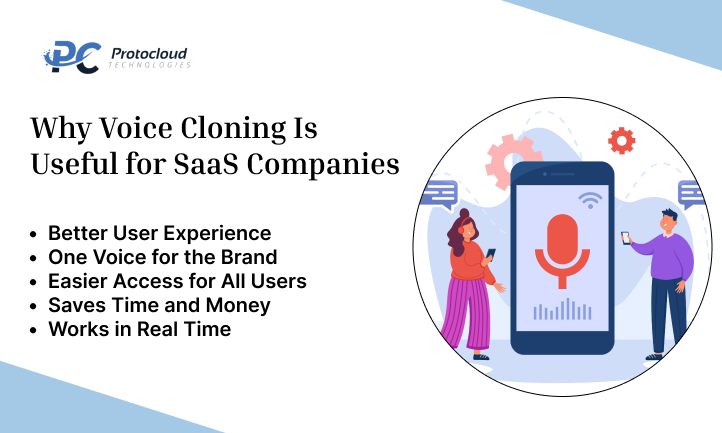
1. Better User Experience
SaaS companies want users to feel connected to their tools. Voice cloning helps make this happen. A friendly voice can guide users, explain features, or answer questions.
For example, a software tutorial can talk step by step. It feels more personal and helpful than plain text. Users enjoy this kind of experience.
2. One Voice for the Brand
Every brand has a style and tone. Voice cloning helps companies use one consistent voice everywhere. The same sound can appear in product videos, apps, and customer calls.
A single voice helps people remember the brand. It builds trust and makes the company look more professional.
3. Easier Access for All Users
Voice cloning makes software easier for everyone to use. People who have trouble reading or seeing can listen to the voice instead.
SaaS products with speech options can reach more users. This makes the software more inclusive and user-friendly.
4. Saves Time and Money
Recording human voices takes time and money. Hiring voice artists for every update can be expensive.
Voice cloning solves this problem. Once a cloned voice is ready, companies can make new recordings anytime. It is faster and costs less.
5. Works in Real Time
AI voices can be used instantly. Customer support bots can speak 24 hours a day. The cloned voice can read, reply, and explain without delay.
How SaaS Companies Use Voice Cloning
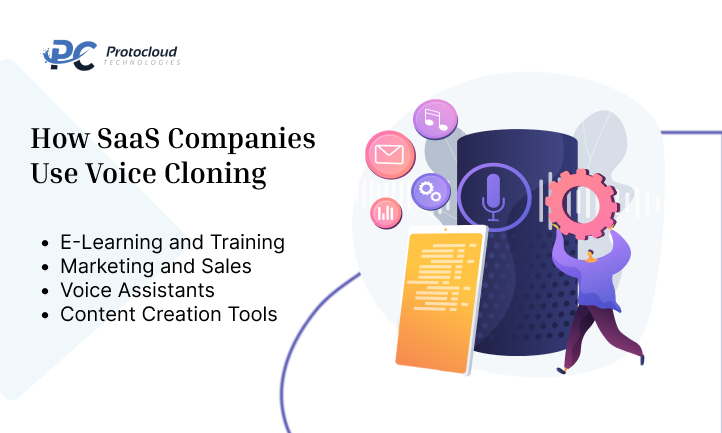
Customer Support
AI voice bots use cloned voices to help customers. They can greet users, answer questions, or give updates. The human-like voice makes the experience smoother.
E-Learning and Training
Online learning platforms use cloned voices to explain lessons. A soft and natural voice keeps learners interested. It also saves time for teachers and creators.
Marketing and Sales
SaaS companies use voice cloning to create ads and demo videos. The same voice can be used in different languages. This keeps marketing simple and effective.
Voice Assistants
Many SaaS products have voice assistants. These assistants guide users and give quick answers. A cloned voice makes them sound natural and polite.
Content Creation Tools
Voice cloning helps content creators make podcasts, reels, and YouTube videos. It saves recording time and gives a professional sound.
Top Benefits of Professional Voice Cloning

- Low Cost: No need to hire new voice artists for every update.
- Fast Production: Audio is ready within minutes.
- Natural Sound: The voice sounds clear and emotional.
- Multi-Language: The same voice can speak in different languages.
- Stronger Brand: A unique voice builds brand identity.
- Better Connection: People trust voices that sound real.
Ethical and Security Points

Voice cloning is powerful, but it must be used carefully. Companies must make sure the technology is safe and fair.
Here are some simple rules:
- Always get permission from the person whose voice is cloned.
- Tell users if the voice they hear is made by AI.
- Store all voice data safely.
- Add a watermark to track cloned audio.
- Avoid using cloned voices for false or harmful content.
Following these rules keeps users’ trust and protects the company’s image
The Future of Voice Cloning in SaaS

The future of voice cloning is very bright. SaaS companies will keep finding new ways to use it.
Voice-Controlled Apps
Soon, users will talk to apps instead of typing. Commands like “create a report” or “show my tasks” will work through voice.
Real-Time Translation
AI will make it possible to translate and speak instantly in another language. The cloned voice will still sound natural and personal.
Digital Avatars
Customer support will soon have digital humans. They will speak cloned voices and provide help anytime.
Virtual Reality and Metaverse
In virtual spaces, cloned voices will make the experience more realistic. People will interact with digital characters that sound real.
The more AI grows, the more human-like these voices will become. SaaS tools will feel alive and interactive.
Conclusion
Voice cloning is changing how SaaS companies talk to users. It helps software sound human and personal. With it, brands can build strong identity, save money, and improve user trust.
But it must be used with care. Consent and security are very important. When done the right way, voice cloning can make every app feel more natural and alive.
AI is giving SaaS a new voice, one that connects, teaches, and inspires.

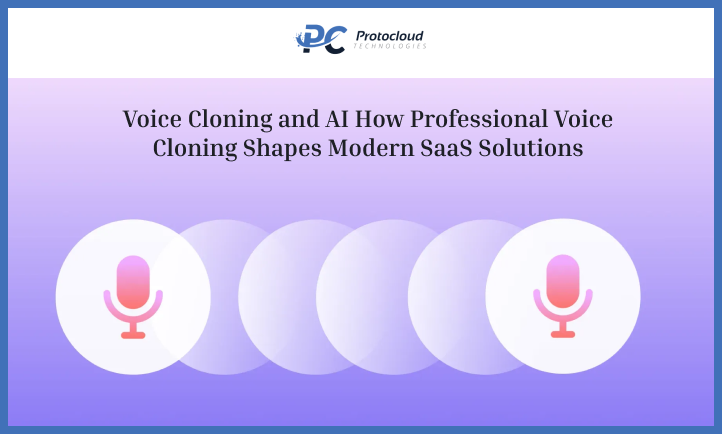









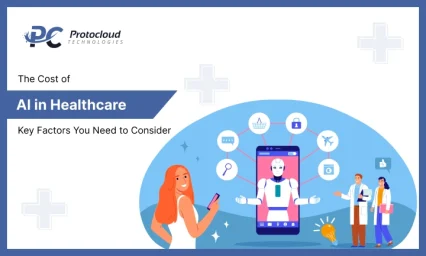




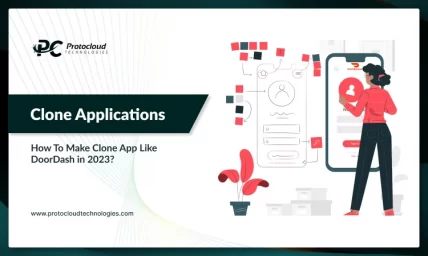

Leave a Reply